Vauxhall Vivaro Electric van review (2023)
A gamechanging electric van with 200 mile range and plenty of payload
PROS
- Outstanding driving range
- High payload for an electric van
- Good to drive
- Well equipped
- Cheap to run
CONS
- Expensive to buy versus diesel
- Diesel can still carry and tow more
- Cramped cab
- Offset driving position
- Charging still takes time
Summary
The Vauxhall Vivaro Electric van, though it speaks quietly – and in more ways than one – is a gamechanger for electric vans. One of five medium-sized electric vans from the Stellantis group, the Vivaro Electric promises over 200 miles of driving range, yet also manages to deliver payload that’s competitive with conventional diesel-powered rivals.
This is an EV that could properly suit the daily use of many businesses and operators. That’s what we mean by gamechanger.
Plenty of choice
Understanding that one-size doesn’t fit all when it comes to business, Vauxhall is selling more than just one version of the Vivaro Electric.
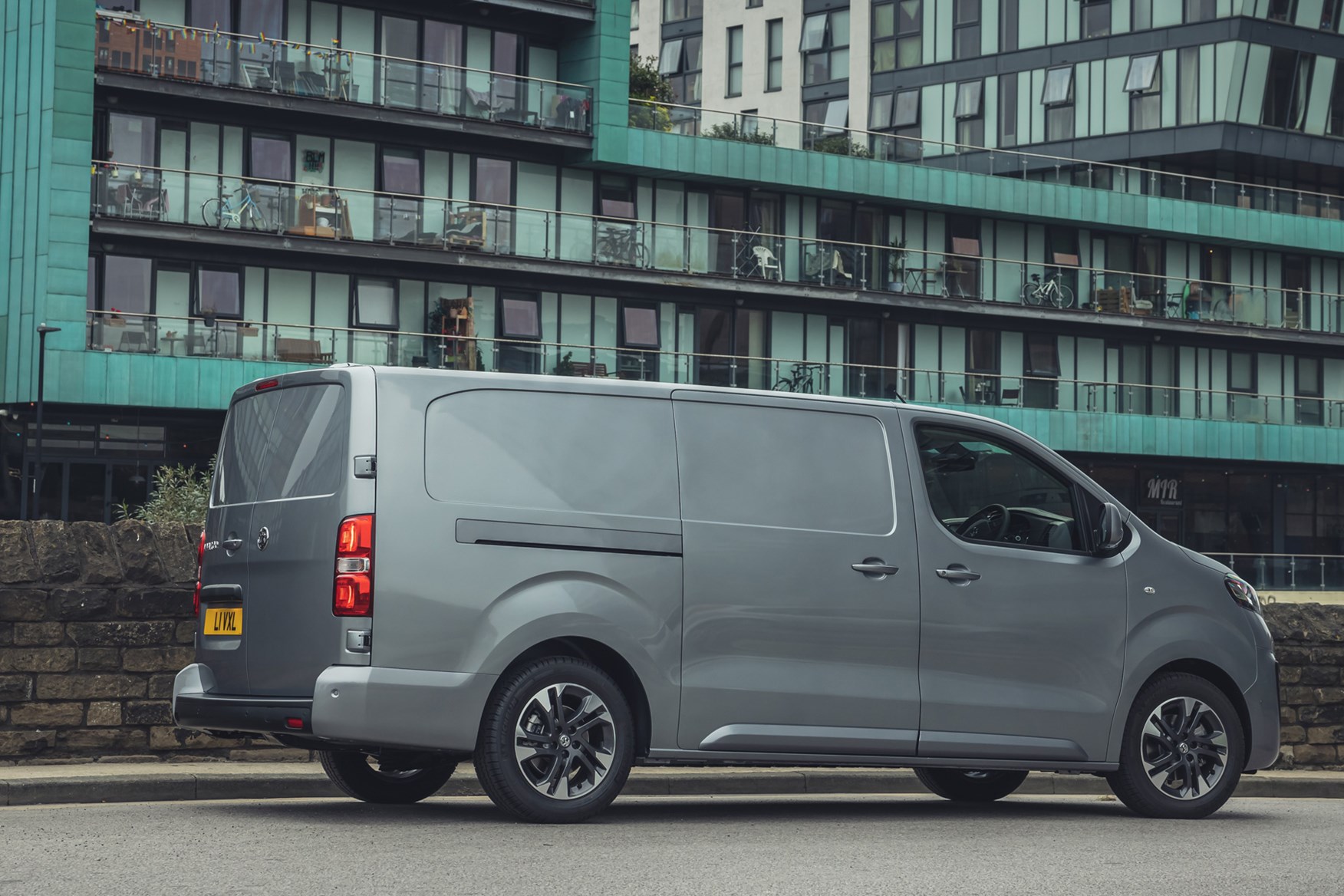
There’s a choice of two battery pack sizes – 50kWh and 75kWh (kilowatt hour being the standard measure of electric vehicle battery capacity) – and like the regular Vauxhall Vivaro, the Vivaro Electric comes in standard L1 and longer L2 bodysizes and three trim levels, including the visually upgraded GS trim. Standard and double cab versions are also available.
All of this means that you can opt for the combination of payload, driving range and cost that best suits you.
One of five
The Vivaro Electric isn't alone in this class, not by a long chalk. It sits alongside the Citroen e-Dispatch, Fiat E-Scudo, Peugeot e-Expert and Toyota Proace. The Citroen, Fiat and Peugeot vans and their manufacturers are part of the seemingly ever-growing Stellantis group, while Toyota takes the van as part of an agreement and puts its badging on it.
That said, spec-for-spec all of the vans on sale in 2023 have near-identical pricing, so which is best for you may come down to the nearest dealer or the price you can strike at the time. Hence we've voted all three joint-winners of the 2021 Parkers Electrified Van of the Year award. The Fiat was not on sale at the time of judging, but it is worth considering them their equal on this front.
Complicating matters further, Toyota now sells a version as well. The Proace Electric doesn't offer as much choice, but it does come with up to 10 years of warranty. For this reason, Toyota received the 2022 Parkers Electric Van of The Year award, although all five lost out to the superb Ford E-Transit in 2023's awards.
Each one of these five electric vans is built in the same factory in France.
Driving range
The maximum driving range for the Vivaro Electric is 205 miles, according to the latest WLTP standards. For that you’ll need the larger 75kWh battery, which will slightly compromise the amount of payload the van can carry.
The smaller 50kWh Vivaro Electric has a 143-mile WLTP rating – still very impressive for an electric van of this size, especially given WLTP is supposed to be better representative of real life.
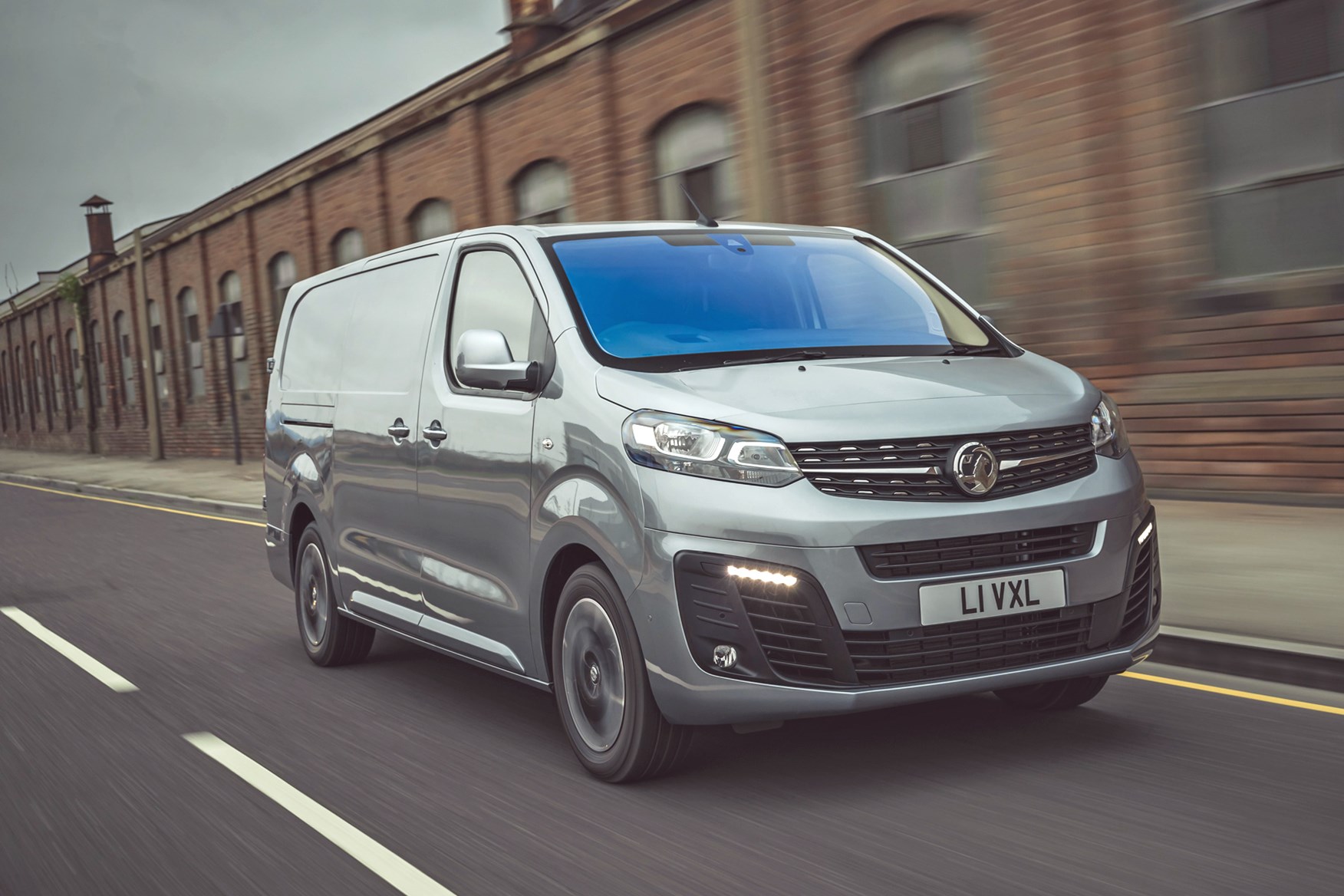
And indeed, in the testing we’ve been able to do so far, the electric Vauxhall van seems to live up to the range hype – though the amount of weight you’re carrying in the back will certainly have an impact on this, as it does the efficiency of any van.
The speed you travel at makes a big difference, too. The faster you go, the faster the range will fall.
Charging time
Adding to its already substantial list of strengths, the Vivaro Electric offers proper quick-charging as standard when most rivals don’t even have it as an option.
This means that if you plug it into a 100kW public charger you can charge the smaller battery pack back up to 80% in about 30 minutes (Vauxhall quotes 32 specifically), while the larger battery pack will manage the same in 45-48 minutes.
Also standard is a more conventional 7.4kW charging system, compatible with home and office wallboxes, with the option to add an 11kW version. Either one of these will deliver a full charge overnight.
You can use a three-pin plug, but you’ll need up to two days (really) to get a full charge with that, so it’s best left for emergencies.
Payload and practicality
Maximum payload for the Vivaro Electric is 1,226kg – some 130kg shy of the best a diesel Vivaro can manage but actually highly competitive with many rival diesel vans.
As you’d expect (if you’ve been paying attention), the biggest payload corresponds with the smallest van fitted with the smallest battery pack. Yet even the least payload-friendly version of the electric Vivaro can carry 987kg.
The load space is exactly the same size as any other Vivaro of this generation, since the batteries are mounted under the load floor. You can find full details on our dedicated Vauxhall Vivaro Electric dimensions page.
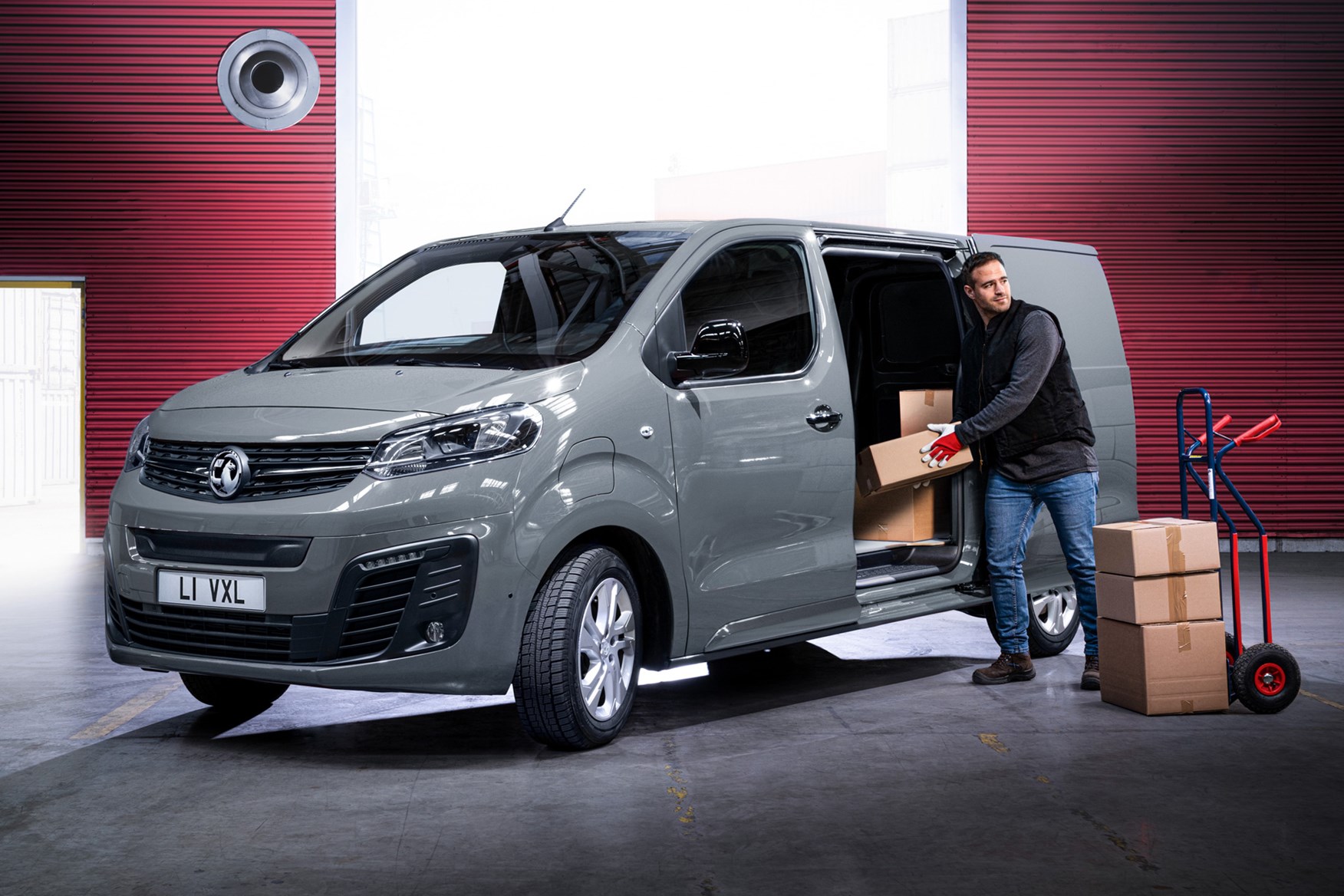
The Vivaro Electric has a towing rating of 1,000kg (1.0-tonne). This is somewhat less than the 1,400-2,500kg the diesel models can pull, but substantially better than preceding electric vans, which aren’t rated to tow at all.
Vauxhall Vivaro trims
There are three trims in the Vauxhall Vivaro Electric range with the somewhat oddly named entry-level Prime and the Pro the core models. These are then joined by the GS trim at the top of the range, which looks markedly different to the other two, thanks to a big spoiler front and rear.
Thankfully it remains low enough to make it under the usual 2m height restrictions you find in town, and it doesn't impact practicality in any way. We'd be wary of using it for any sort of rougher jobs, regardless, as it adds more bits to replace if you bash it around. The interior changes are minimal, with logos on the leather seats and the leather-covered steering wheel the only major changes. It's a shame in a way, as feels like Vauxhall could have added a splash of colour to liven things up inside, but the extra kit already adds to the cost to a hefty tune.
This upgrade cost wise is justified more by the extra safety kit you get, though. Blind-spot warning and semi-adaptive cruise control are the most useful on a daily basis, while plenty you will hopefully never need to use.
Vivaro Electric rivals
Since the Vivaro Electric launched, Vauxhall's rivals have upped their game, with the best electric vans in the class now increasingly appealing. Well, some of them have anyway. The latest updates to the Mercedes-Benz eVito have brought it in line with the Vauxhall in terms of range and payload. Volkswagen has ditched its e-ABT Transporter but now offers the stylish, if small, ID.Buzz Cargo. Ford and Renault have signalled their intentions to launch rivals, too, with the all-new E-Transit Custom due in 2023 and the Trafic E-Tech on its way too.
Until they arrive, this leaves the competition for your cash as something of a family affair, as we’ve already covered. Though in the meantime Ford does offer a petrol-electric range-extender Transit Custom Plug-In Hybrid, with similar technology also featuring in the LEVC VN5, which just about competes with the smaller Vivaro Electric for load capacity.
Vauxhall Vivaro Electric Hydrogen
Looking further into the future, Vauxhall announced in May 2021 that a hydrogen-powered version of the Vivaro Electric is planned for right-hand drive production in 2023.
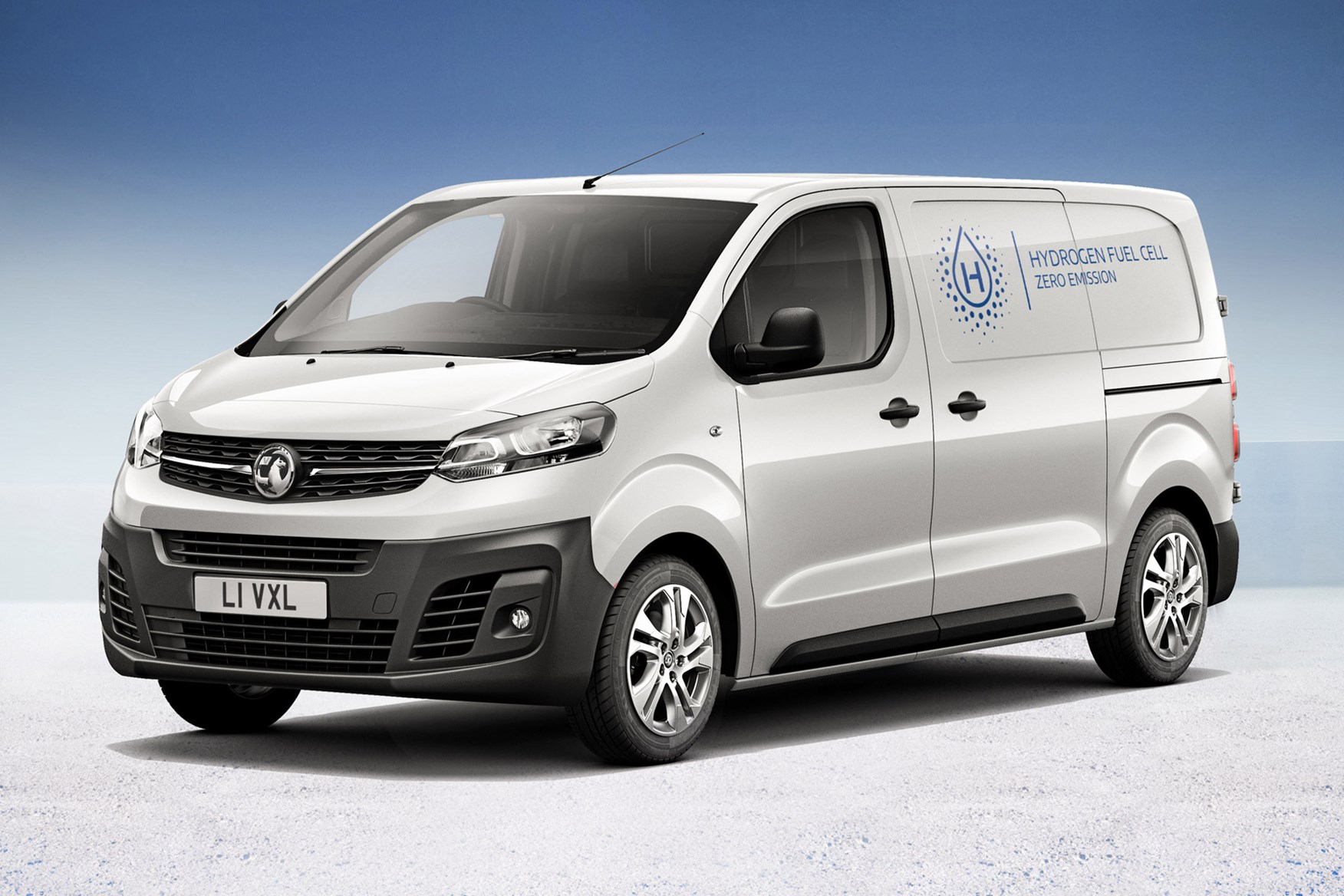
A left-hand drive model marketed under the Opel brand is already on sale in Europe.
Verdict: is the Vauxhall Vivaro Electric electric van any good?
You’ll have to keep reading for our full Vauxhall Vivaro Electric review in order to find out more about the driving experience and running costs. But suffice to say, this electric Vauxhall sets a new standard – not just for medium-sized electric vans but for electric vans full stop.
It suffers with the same issues in the cab as the standard model, but the effectiveness of the electric drivetrain as a solution for businesses concerned about the environment (or simply the cost of operating diesel in zero emissions zones) makes it easier to put these to one side.
This is a truly excellent van, making those German rivals in particular seem like something of a joke when it comes to driving range between charges.
Skip to our full verdict on...
- Quiet, refined and comfortable
- Easy to drive with automatic transmission
- Plenty of performance, reliable range estimates
Whether you’ve been diesel all your life or are already used to electric vans, we think you’re going to be impressed with the driving experience of the Vivaro Electric.
It probably helps that the Vivaro platform has been designed for electric power since day one, but this is a really smooth integration of this modern drivetrain technology, which shows up the limitations of some less well-adapted vehicles.
What powers the Vivaro Electric?
Whichever battery size you choose, the Vivaro Electric is powered by a 100kW electric motor, which drives the front wheels. That’s equivalent to 136hp, which puts in roughly in the middle of the diesel options Vauxhall also offers, and comes with an accompanying 260Nm of torque.
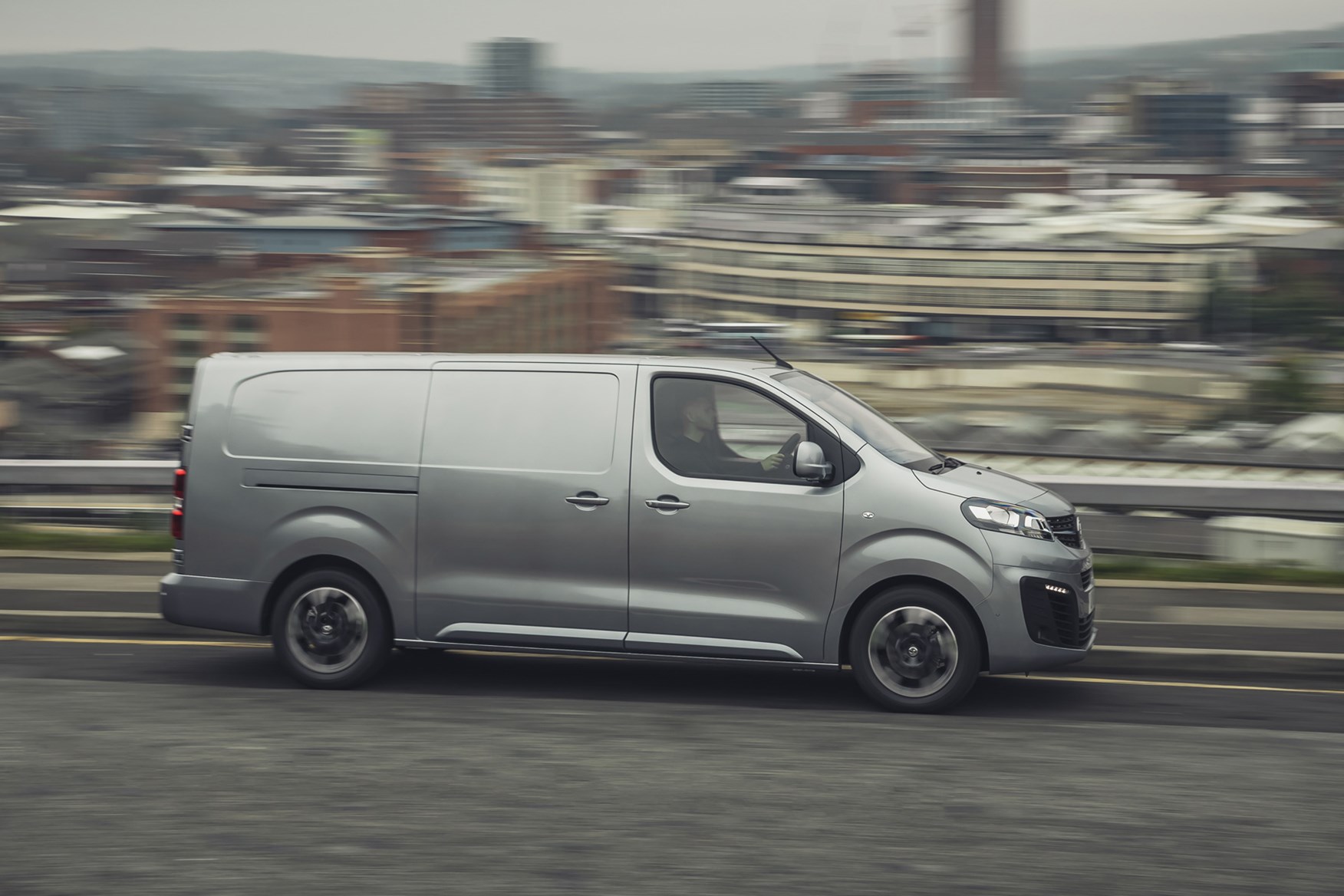
That doesn’t sound like much muscle, but as with all electric vehicles, this punch arrives basically instantly, getting the van moving swiftly and easily. In fact, it feels pretty quick.
A choice of three driving modes – Normal, Eco and Sport – help you balance performance against range, though in practice we found you’ll still go a good distance even in the most powerful setting.
What’s the Vivaro Electric like to drive?
Around town the electric drive makes the Vivaro Electric nippy, accelerating with an almost rocket-like whoosh. And as with all versions of this van, the ride is comfortable and the steering well judged. You’ll be slinging it about in no time, until you remember you’ve got fragile gear in the back.
Top speed is limited to 81 mph, but it will get up to those speeds more than swiftly enough. It makes a variety of electrical noises in the process, but is much quieter than any diesel, even the impressively hushed Vivaro variants. There’s no vibration of any kind to worry about, either.
The electric motor requires only a single-speed transmission, so there are no gears to change or clutches to wear out in traffic here – adding to the relaxed nature of the Vivaro Electric’s progress. You simply select Drive and go; you might need to check it’s switched on first, since it’s that quiet.
What do the driving modes do?
Unlike the driving mode selector in some conventional vehicles, we know exactly what each of the Vivaro Electric’s three driving modes do.
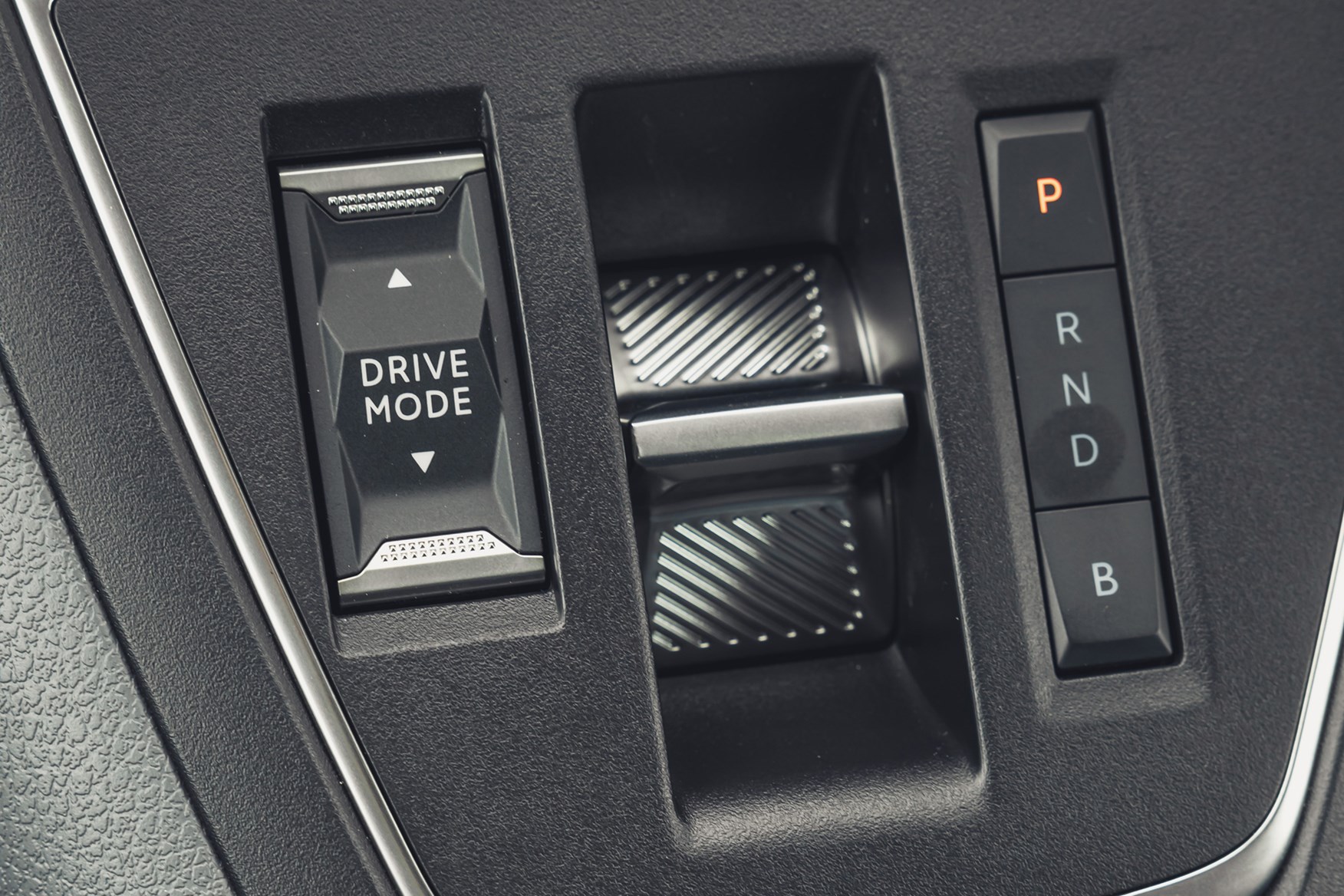
It always starts in Normal mode, which makes sense as it’s the most-rounded blend of performance and efficiency. This setting restricts the motor to 80kW, equivalent to 109hp – the sort of power many regular diesel van drivers typically suffer with. Initial response is still strong, so you’ll only really notice the difference between this and Sport if you’ve really got your foot down.
The Eco setting goes further, and cuts the motor back to 60kW (81.5hp) while reducing the power consumption of things like the air-conditioning system, which will also help extend the driving range. Switching to this you should instantly see the remaining driving range display in the instrument cluster gain a few miles. Useful if things are looking tight, and still with enough performance to be perfectly driveable if you aren’t carrying too much weight onboard.
As you’ve probably guessed, it’s only the Sport mode that gives you the full 100kW or 136hp. The most obvious practical repercussion of this – aside from a slight reduction in the predicted remaining range – is that the electric motor feels stronger for longer when accelerating hard. A useful option to have if you’ve got a heavy payload (or are late for that next job), but for the most part we were more than satisfied cruising about in the Normal setting.
What’s the driving range really like?
Initially we were very impressed with how accurate the Vivaro Electric's range prediction appeared to be. And indeed, if you drive it sensibly, this will still be the case.
However, if you put your foot down, especially after the van has been in the hands of a more considered driver, you will see the driving range plummet almost alarmingly.
Having said that, the van does seem to recalibrate itself to different driving styles very quickly (much more so than in many other electric vehicles), making the driving range more accurate again. It also doesn't take much modification to the way you drive to improve the efficiency, either.
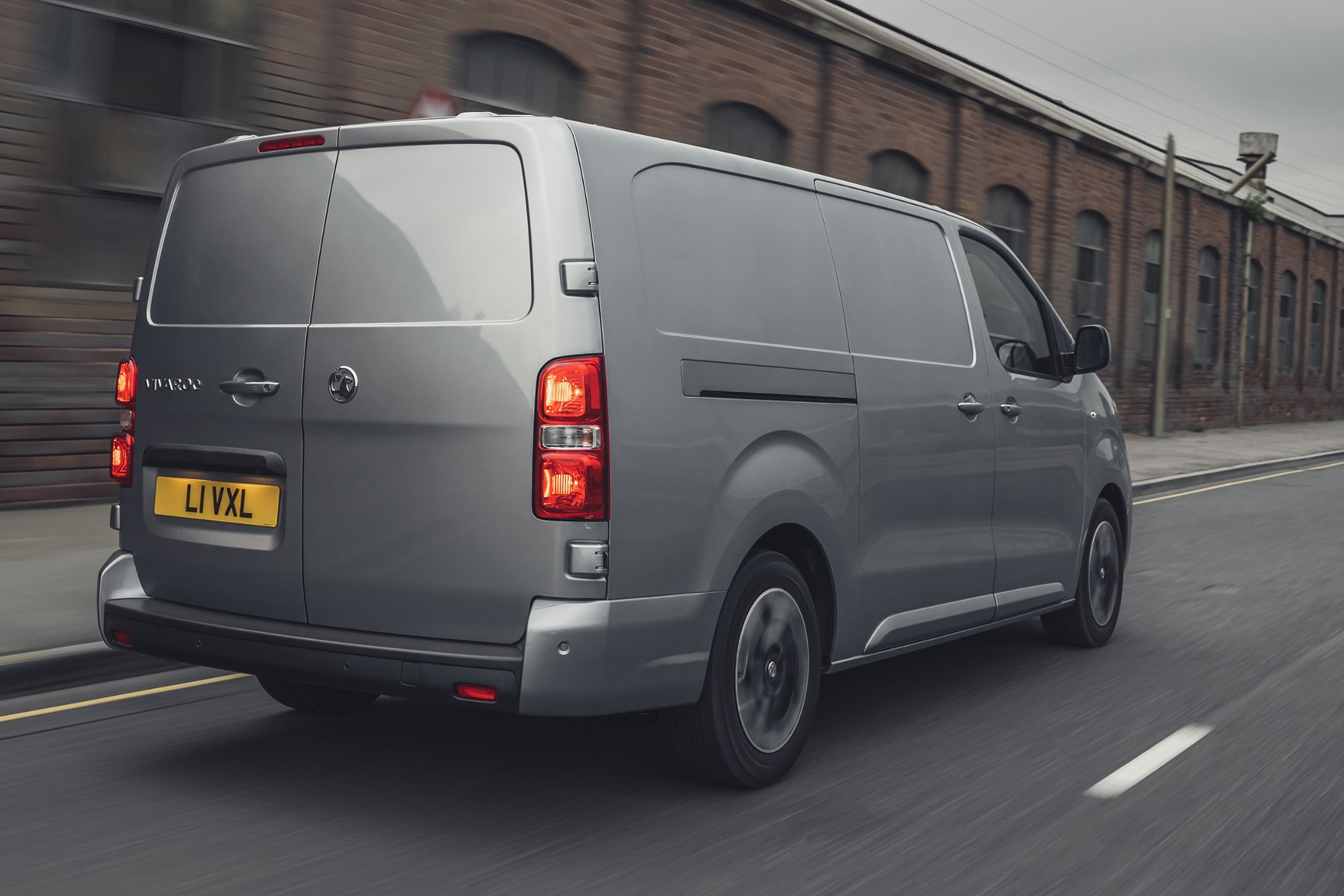
There is a boosted energy regeneration setting, activated by a B (for Brake) button on the centre console. This increases the amount of energy the electric motor turns back into electricity when you slow down, increasing the speed with which it comes to a stop in the process.
Use it, and you’ll be gently recharging the batteries every time you release the accelerator – which works very well around town. At higher speeds it’s better left off, though, as allowing the van to coast is more efficient than slowing too much and having to speed up again.
As with all electric vehicles, you will find that driving range in winter is much lower than in summer. Something you need to take into account, as recharging isn't as simple and quick as putting in more fuel.
- Limited interior makeover covers electric van essentials
- Push-button gear selector
- Same small cab and poor driving position
There are no real surprises in the Vauxhall Vivaro Electric’s cab interior. This will be good or bad, depending on how much you like the diesel models.
What is different inside?
The instrument cluster is slightly different, showing remaining range and giving you a power meter in place of the usual rev counter. This shows you not only how much more energy you’re using whenever you accelerate hard but also the amount you’re gaining whenever you slow down. Surprisingly fascinating stuff.
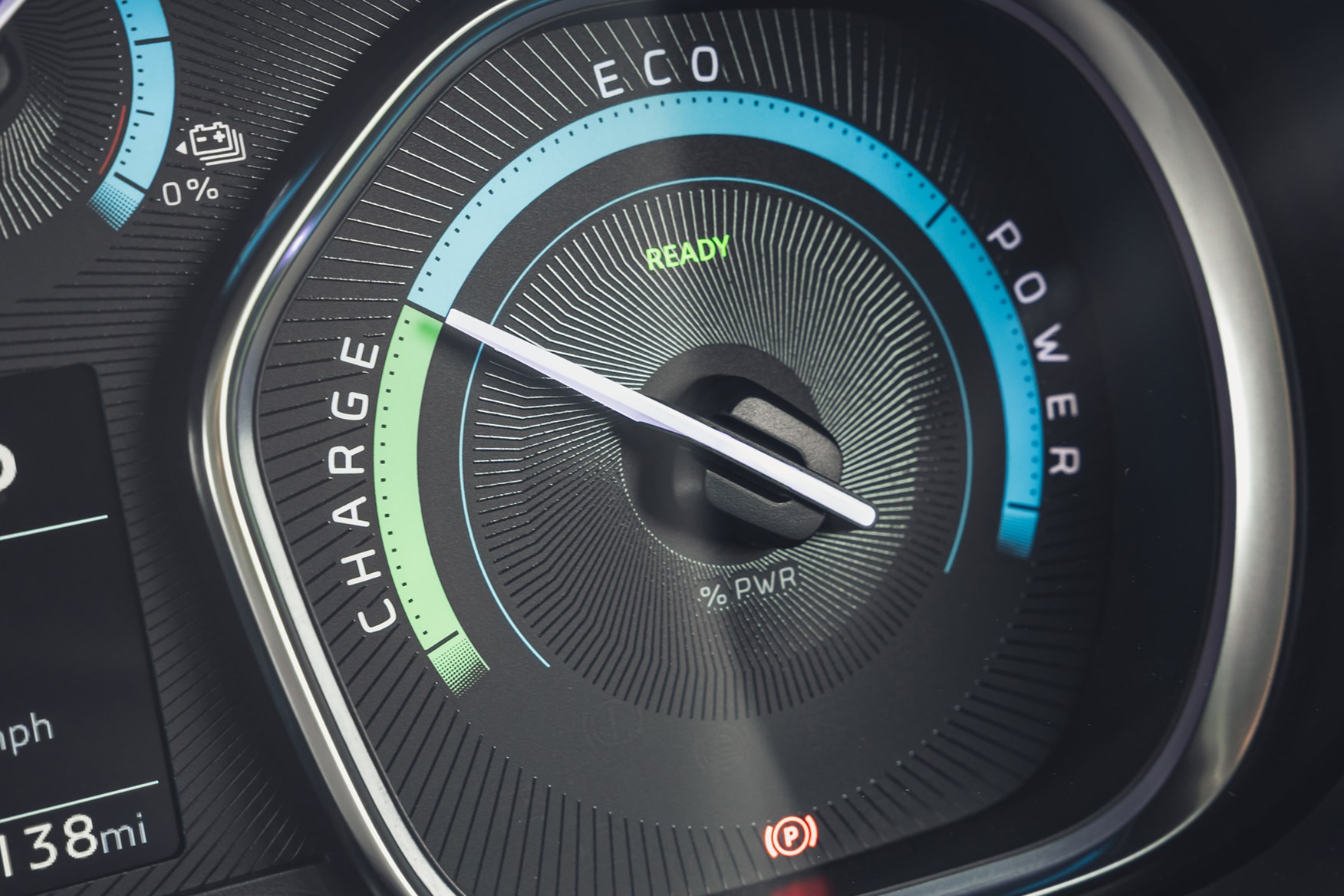
Look closer still and you'll find there's also a dedicated gauge to show you how much energy the heating and ventilation system is consuming. This is genuinely useful for maximising your driving range and not a gimmick.
Elsewhere you’ll find there’s a dedicated energy-flow display on the central touchscreen, while the usual gearlever or rotary gear selector has been banished from the centre console. Replaced by push-buttons for Drive, Reverse, Park and Brake, and a rocker switch for the driving modes.
So what’s the bad news?
Turning the Vivaro into a planet-saving electric van can’t fix the size of the cab – which some may find cramped, and certainly isn’t very roomy for three – nor the offset driving position. The mirrors are relatively small as well.
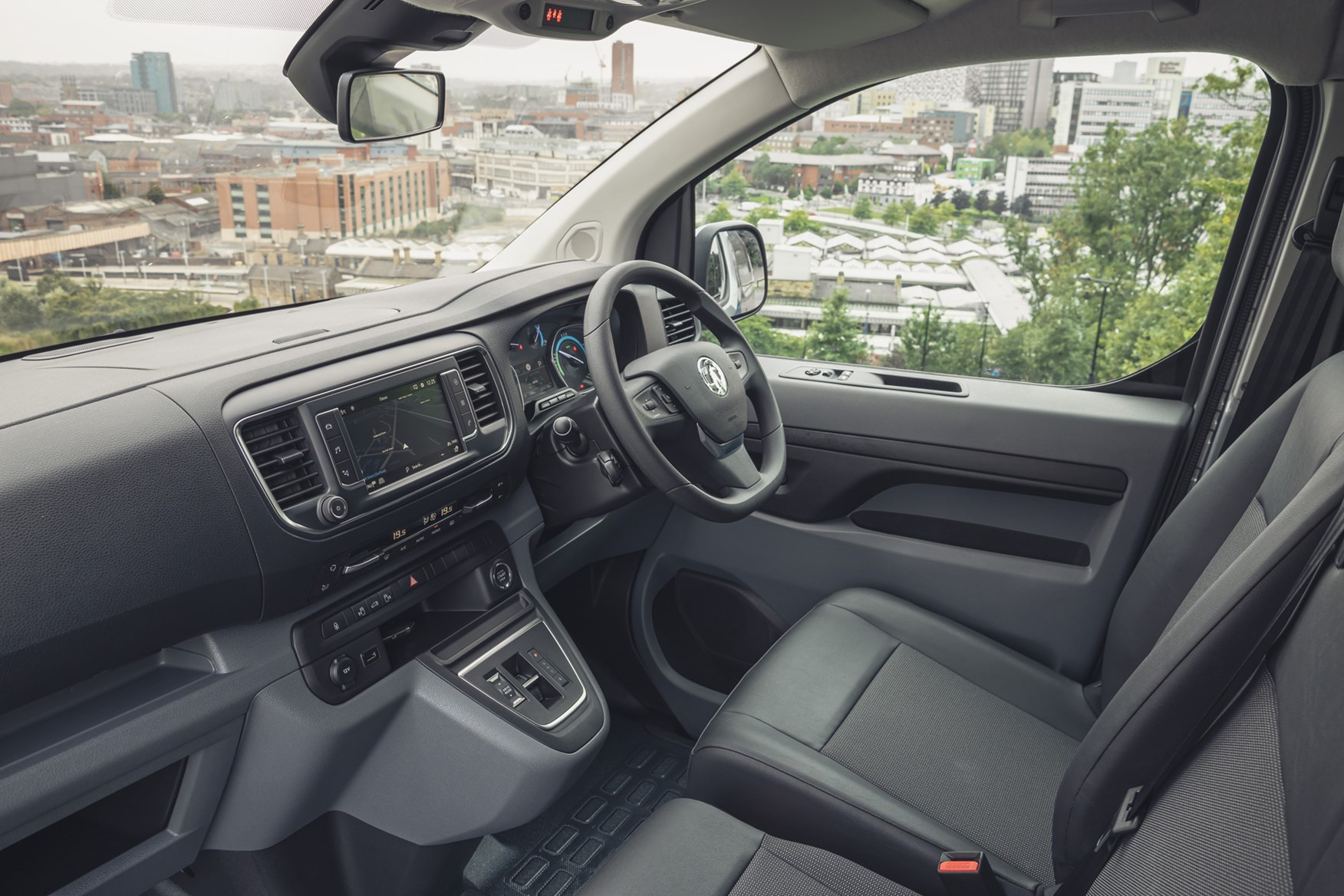
Just things to consider while you work out just how much you don’t want to drive a diesel van any more.
- Low cost per mile balances-out higher asking price
- Eight-year battery warranty (but just three for the rest of the van)
- Lots of standard equipment
Electricity costs less per mile than diesel, so although the Vivaro Electric is more expensive to buy than its conventional siblings, it should also prove cheaper to run.
This does depend somewhat on your electricity tariff, and where you charge it, though. The fastest public chargers can be very expensive – but that’s the price you pay for necessity and convenience.

Best operating practice for one of these will be to plug it into nice and cheap off-peak electricity every night, supplied by an energy that offers a special electric vehicle tariff. And then driving it within its range capability during your working day. Simples – as long as you have got somewhere you can charge it this way.
Tax costs are also less for electric vehicles, reducing your annual expenses.
Vauxhall Vivaro Electric service intervals
The Vivaro Electric should be cheaper to maintain than the diesel models, since there are fewer moving parts, fluids and filters to change. Use the motor’s B (for Brake) setting, and you could be even easier on your mechanical discs and pads.
Actual servicing intervals are 25,000 miles or two years, whichever is sooner – though the first service should be completed after one year or 12,500 miles.
Vauxhall Vivaro Electric warranty
While most of the van is covered by Vauxhall’s standard three-year / 100,000-mile warranty, the battery components get extra reassurance in the form of an eight-year / 100,000-mile warranty.
A battery certification programme will be used to reassure secondhand buyers that used vans can still do the big range business, which should help keep values strong. That said, it isn't very likely you will need to replace the battery anyway.
Standard equipment
The Vivaro Electric comes in a choice of three trim levels: Prime, Pro and GS. It was launched in 2020 with Dynamic and Elite trims, but these were replaced in late 2022, at which point the GS was added to the line up.
Vauxhall Vivaro Electric Prime standard equipment highlights:
- Twin sliding side doors
- Full metal bulkhead
- Air conditioning
- Cruise control and speed limiter
- Hill-start assist
- Six-way adjustable driver’s seat
- Dual front passenger seat with under-seat storage
- Automatic lights and wipers
- Rear parking sensors
- 7.0-inch touchscreen infotainment system
- Apple CarPlay and Android Auto
- Electric, heated door mirrors
- Alarm
- Rear parking sensors
- Vauxhall Connect system
Vauxhall Vivaro Electric Pro standard equipment highlights (in addition to Prime):
- FlexCargo load-through bulkhead
- Satellite-navigation
- Voice control
- Second USB socket
- Front parking sensors
- Reversing camera
- 17-inch alloy wheels
- Metallic paint
Vauxhall Vivaro Electric GS standard equipment highlights (in addition to Pro)
- GS styling with bespoke front bumper, side skirts, rear spoiler and chrome-effect front grille
- 18-inch black alloy wheels
- GS badging
- Leather seats with red stitching
- Leather-covered steering wheel
- Head-up display
- Lane-departure warning
- Blindspot monitors
- Autonomous emergency braking
- Semi-adaptive cruise control
The standard Vivaro – and its cousins – already have a long trail of official recalls behind them, which you can either consider highly worrying or the sign of a conscientious van maker that doesn’t brush problems under the carpet.
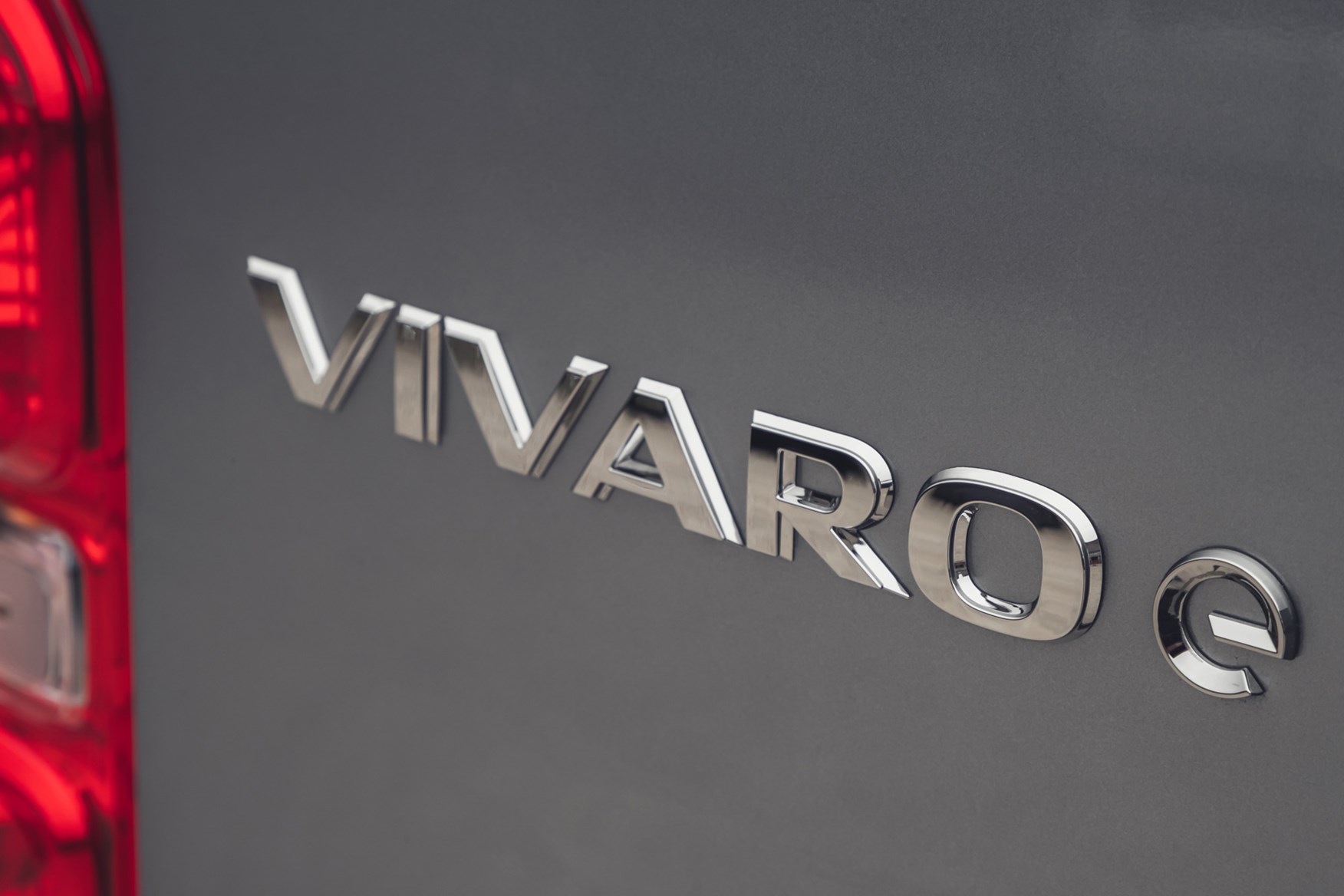
The Vivaro Electric is still relatively new as a standalone model and there are no specific recalls for the EV version, although it will still be subject to some of the wider Vivaro recalls so be sure to check the work has been done. However, the drivetrain is less mechanically complicated than a diesel engine, which is promising.
- Lots of safety kit available, if you’re prepared to pay for it
- Euro NCAP Silver award
- Alarm fitted as standard
If it’s safety kit you’re after, go for the GS trim level.
The standard Vivaro Electric Prime covers the basics – driver’s airbag, electronic stability control (ESC) – but only GS comes as standard with modern active safety aids such as autonomous emergency braking (AEB), blindspot monitors and lane-departure warning.
This is all the stuff that Euro NCAP has tested in the standard Vivaro when evaluating van safety, earning it a reasonable Silver award.
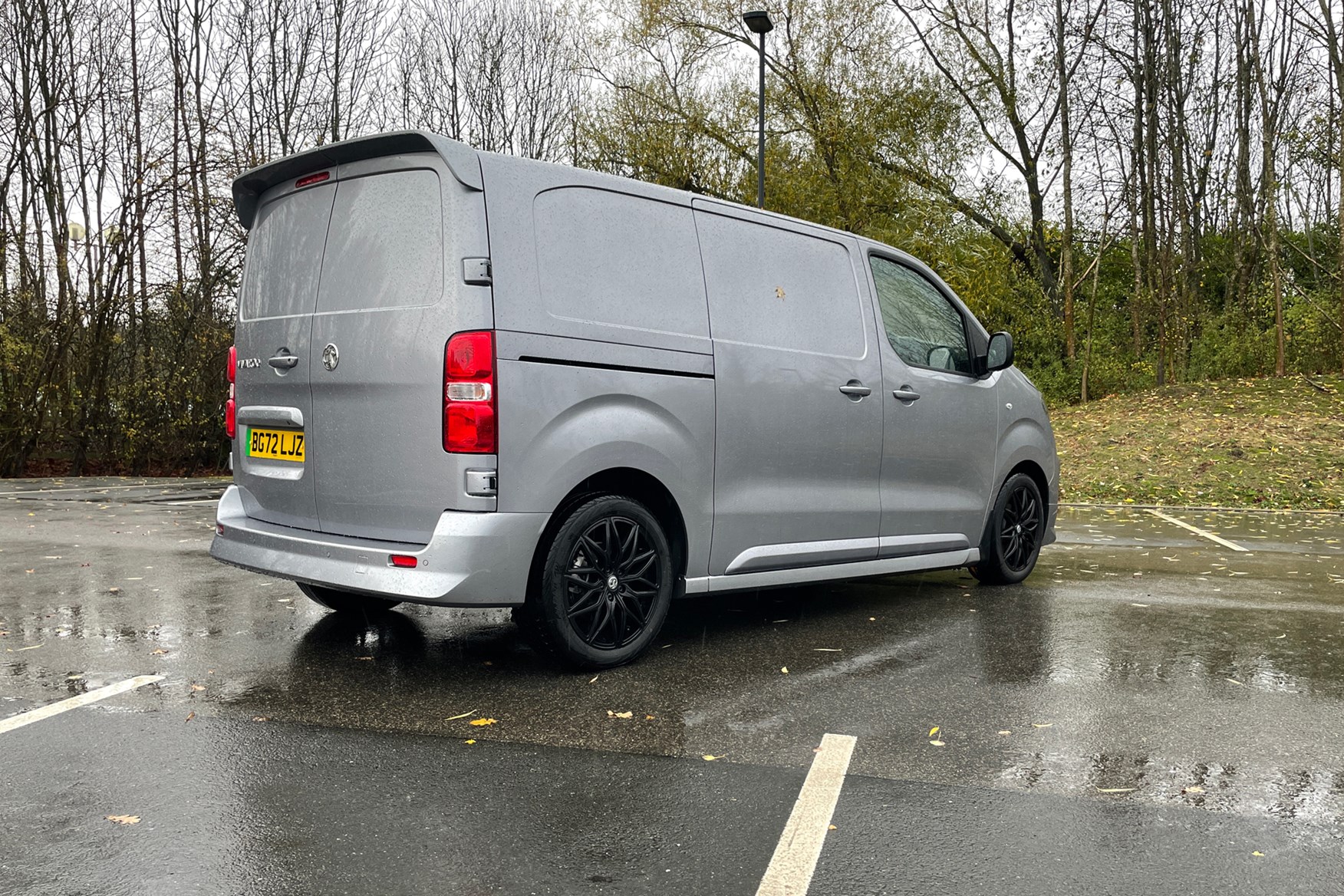
The head-up display fitted to Pro models is also useful, since it helps you keep your eyes on the road while checking your speed and other functions.
As for security, all versions of the Vivaro Electric come with a standard-fit alarm. Good show.
Which Vauxhall Vivaro Vivaro-e is best for me?
Which version of the Vivaro Electric is best for you will come down to how much of an emphasis you place on either driving range or payload. If it helps, most customers are expected to opt for the bigger battery pack and the reassurance its extra driving range brings.
All three trim levels come with plenty of standard equipment, though as we’ve already discussed, the range-topping GS model does far better for safety equipment. This doesn't impact payload or practicality but it does add a load of extra cost to the prospect. Given that the GS adds more than third to the price, it makes for a tricky decision on a purely financial basis, and it makes a lot more sense to add the Diver Assistance Pack on as it only puts an extra £1,000 to the price.
Sure, the visual upgrades are nice, but we can't help but wonder if they are there as a tempter to get buyers to head for the top-level trim rather than delve into the options list.




















